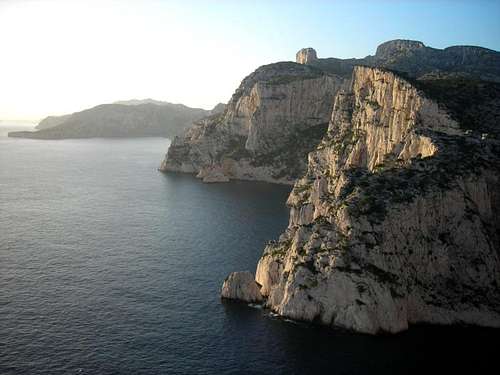-
 3545 Hits
3545 Hits
-
 83.1% Score
83.1% Score
-
 16 Votes
16 Votes
|
|
Mountain/Rock |
|---|---|
|
|
43.20245°N / 5.49790°E |
|
|
Trad Climbing, Sport Climbing |
|
|
Spring, Fall, Winter |
|
|
328 ft / 100 m |
|
|
Overview
Doigt de Dieu
Between Cassis and Marseille the Mediterranean coast looks like a series of high and spectacular cliffs of white rock interspersed with several narrow and long coves. It's one of the finest limestone massif of the world, wild and well preserved, despite being very close to the civilization: the Calanques de Marseille. All the Calanques are truly amazing, a unique environment, breathtaking and world famous! Untouched nature, transparent sea and beautiful backdrops, a spectacular area to climb. The white limestone walls of the Calanques overlook narrow fjords and a blue and turquoise sea with unmatched aesthetics and offers unforgettable sensation. The entire territory of the Calanques was protected by the institution of the Parc National des Calanques.
Among the most spectacular sites there is the Calanque d'En-Vau with wonderful panoramic points! En-Vau climbing area is one of the highlight of Calanques de Marseille. Located at the eastern end of the Calanques massif, En Vau is a wonderful narrow bay borded on both sides by vertical limestone walls.
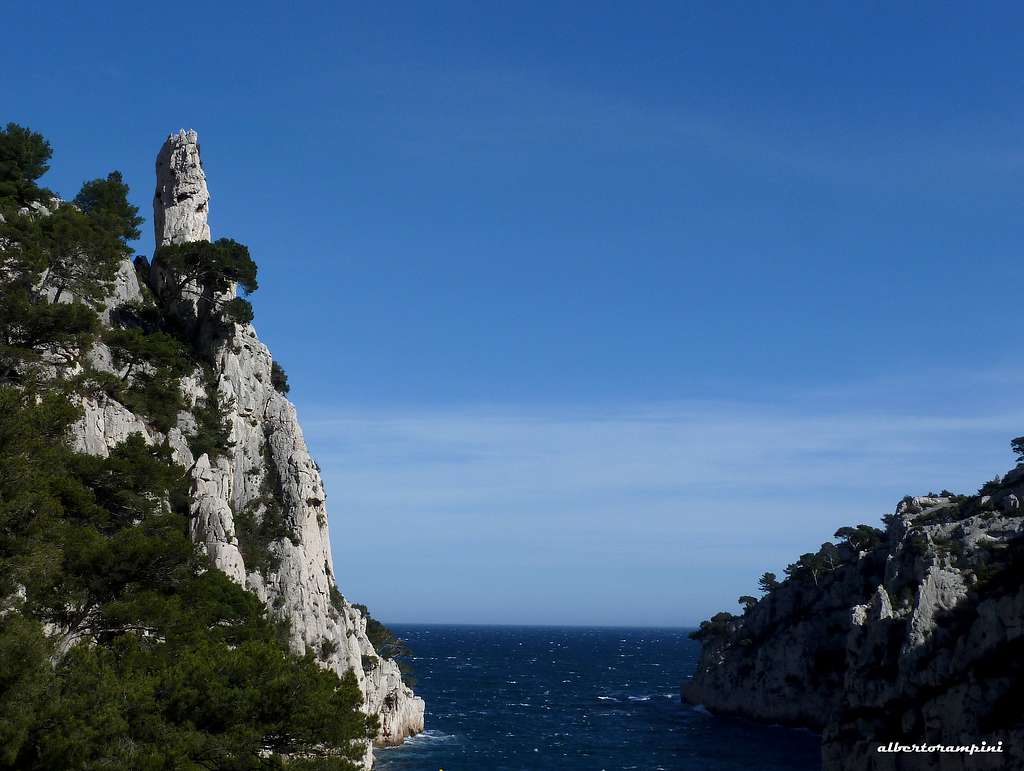
It's one of the most famous rocky cirques of the Calanques. When looking at the sea from the beach, the Calanque d'En-Vau is dominated on the right (West) by the cliffs that descend from the Plateau de Castelvieil, including the Arch of Marseilles, Americans, La Supercalanques. On the left, facing them, other cliffs, including the Saphire, the Petite Aiguille... and the Doigt de Dieu. Doigt de Dieu means "Finger of God" and have not a particularly original name, in fact there are indeed many monoliths bearing this name. In this case it is a slender obelisk of bright white limestone located on the left side of the Calanque d'En Vau and dominating the crystalline waters of the bay with its inviting profile. Difficult to resist the call for the climber.
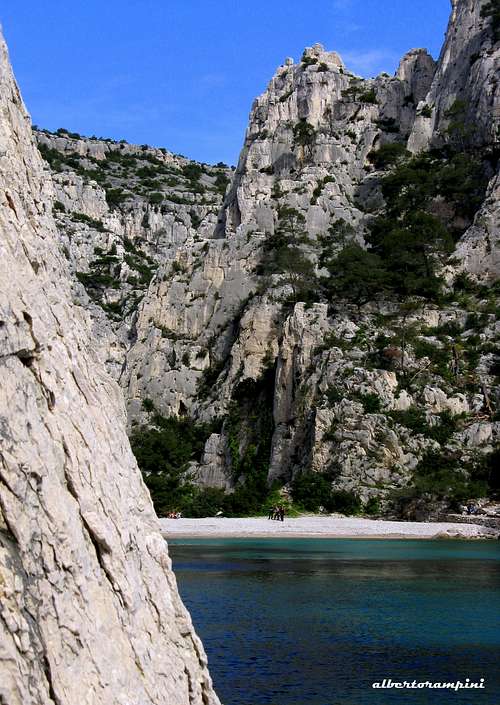
The route is of the "old-fashioned" kind, since it follows lines of weakness of the wall (crack, dihedral) and its equipment is non-existent in the middle easiest lengths. The climbing is interesting, quite continuous and very aesthetic just above the turquoise and emerald waters of the Calanque: beautiful! The limestone is very correct, but the "patina" is felt in the first pitch. The last pitches are superb (variant of left and right), quite varied on finely carved slabs, micro-reliefs and crack.
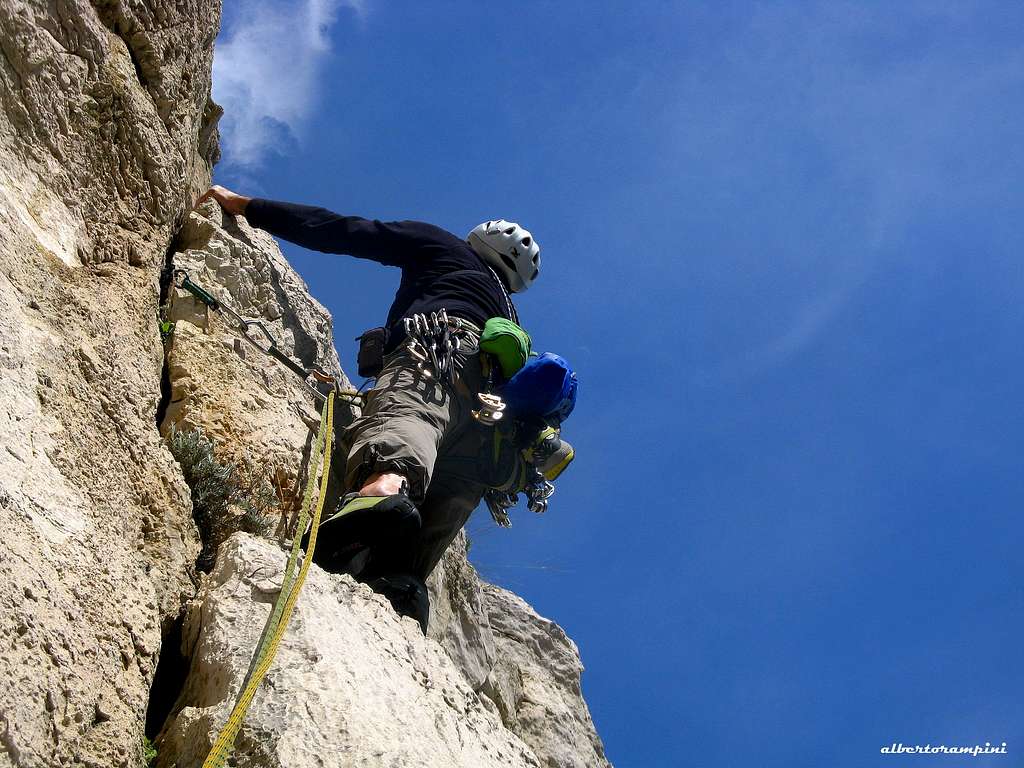
Getting there
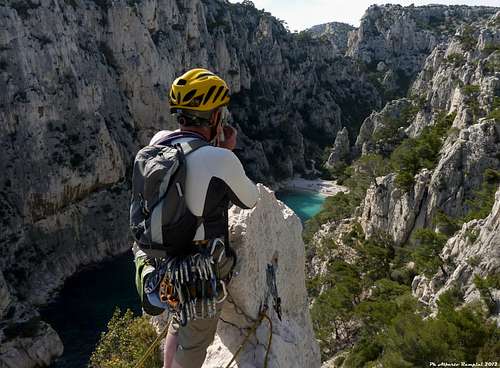
The Doigt de Dieu is located in the Calanque d'En Vau.
- How to reach the Calanque d'En-Vau
Currently, after the closure of the "Gaston Rebuffat" route to the Col de la Guardiole, the shortest access to the Calanque d'En Vau is from the town of Cassis (located to the East of Marseille), via Port Miou and Port Pin.
Approach from Cassis - Road access
From Cassis Camp-site drive to the city centre following signposts "Les Calanques", going to the large parking lot of Presqu'île at the end of the Avenue Notre Dame on the peninsula of Cassis (road without end, pay parking). Possibility of parking in the surrounding streets. Sometimes places are scarce, in this case park directly on the parking Gorguettes (near the entrance to Cassis arriving from Marseille by the road departmental). Shuttles will allow you to reach the center (casino roundabout) or the peninsula.
Approach from Cassis - Walking access - Port Miou to Port Pin and En Vau path (Old GR98-51 - Finest path)
The hike from the cove of Port Miou (Cassis peninsula) allows the access to the creek of Port Pin and En Vau. The path follows the route of GR98-51, whose layout was modified a few years ago. There are two itineraries. Here it will be described the old path. From the parking lot join the cove of Port Miou by the "Green" dotted trail, then take the wide track that runs along the creek and the old quarries (Route GR98-51 marked Red and White ). At the end of approximately 800 m, after having passed a building on your left and before the track starts to climb, take to the left the old trail of Port Pin marked in "Black" dotted lines which goes along the sea. Attention to the slippery rocks. When overhanging Port Pin turn turn to right to reach the GR and descend to the cove. From the cove of Port Pin, take the GR98-51 trail marked out in Red and White that climbs into the valley on the West side of the beach. Follow the path to the junction at the exit of the valley. Take straight, the path becomes a little more steep with 100 m of difference in level to descend. Arrived at the bottom, take on the left the trail "Red" which goes down to the creek of En vau.
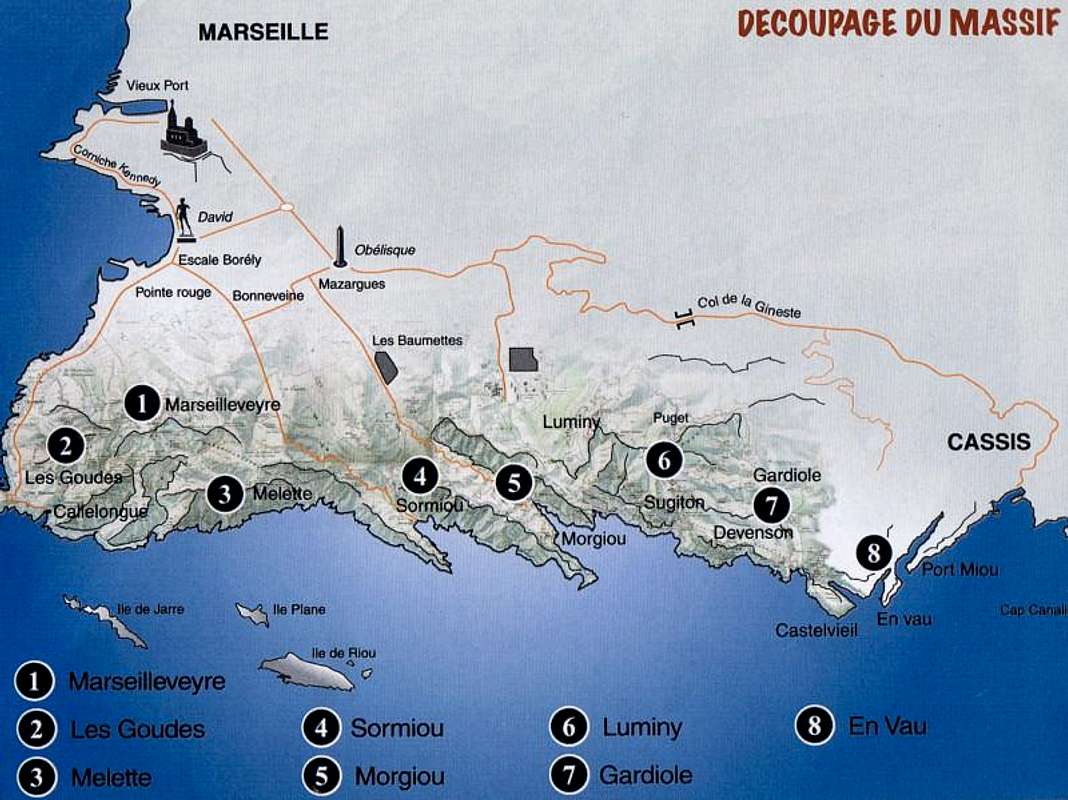
Approach from La Guardiole
Access via La Guardiole is always possible but, due to the closure of the "Gaston Rebuffat" road, it is much longer than in the past (about 2 hours), in fact it is necessary to reach the old parking lot of the Guardiole on foot from the road D559.
- From Cassis, take the D559 towards Marseille. After a few kilometers (uphill then false flat), we arrive at the military camp of Carpiagne. At camp level, park.
- From Marseille, take the road D559 direction Cassis, climb the Gineste pass and continue for 3.5 km. At a barrier on the right, park.
Doigt de Dieu Intégral
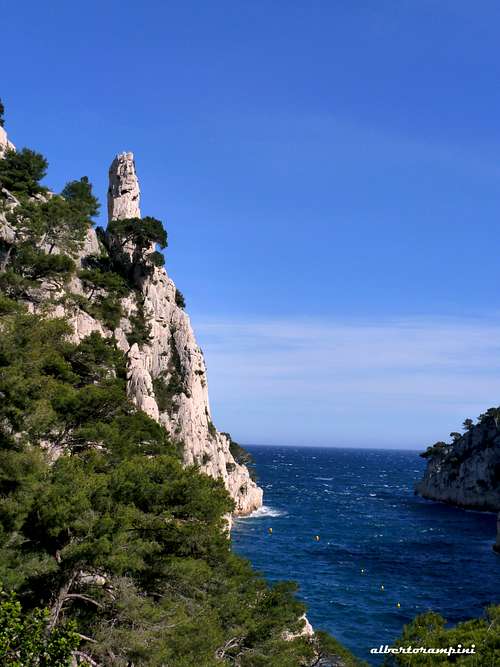
Difficulty: TD, 6b>6a
Length: 150 m
Exposition: SW
Equipment: excellent (bolt inox) along the two harder lengths, very well protected. On the other hand, a single point in L2 and no equipment in L3 and L4 (that it is better to chain in only one length of 30 m approximately, no relay in place between L3 and L4). Friends 0,2; 0,5; 1 and 2. All relays are equipped.
First ascent (to R4): Victor Chauvet, Charles Magol - May 16th, 1937
Exit (L5): Charles Bayet, Paul Guerin, Henri Joubard - May 14th, 1939
Re-equipment: Jean-Luc Allinne, Marc Guiot
Approach from En Vau
From the beach, follow at best the left edge of the creeks to the foot of the Doigt.
L1 6b Very well equipped, but "patineé"
L2 4c Cracks
L3 3b No relay in place
L4 3b Can be chained with L3
L5 6a Magnificent. Right variant even more beautiful (6b).
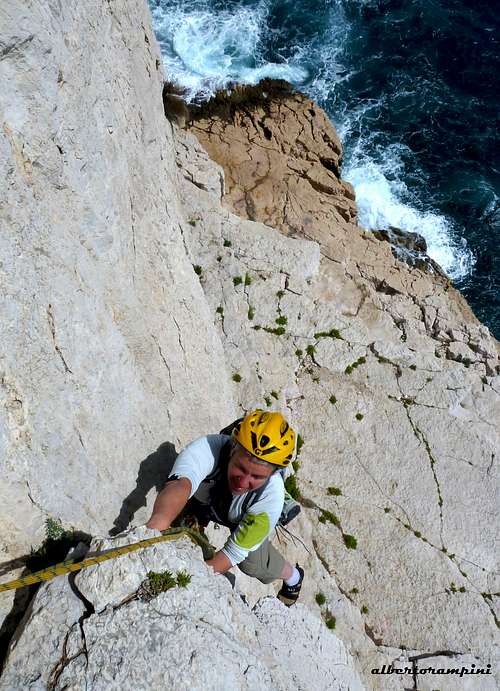
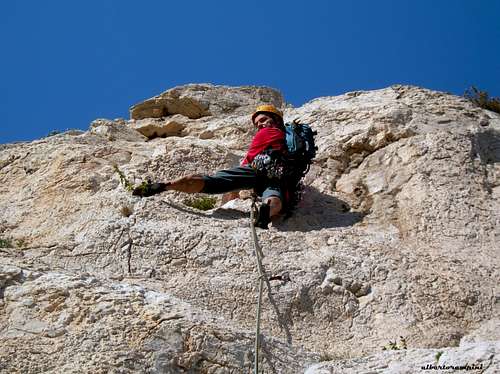
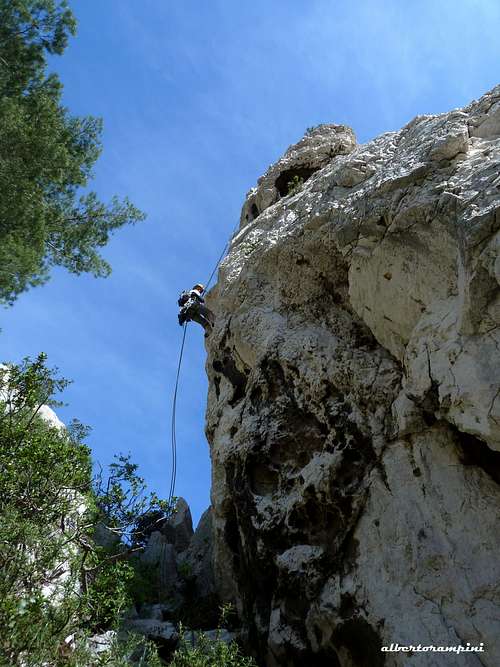
Descent: rappel down the opposite side then take a path and with a second rappel on a tree (old lanyard in place), then back on the path to the path. It is also possible to abseil directly on the route.
The two harder lengths are very well protected. On the other hand, a single point in L2 and no equipment in L3 and L4 (that it is better to chain in only one length of 30 m approximately: no relay in place between L3 and L4).
Essential gear
Small set of nuts (medium sizes) to complete the three lengths in the middle.
Red Tape
Parking payant in Cassis. Road "Gaston Rebuffat" to La Gardiole is closed to cars.
When to Climb
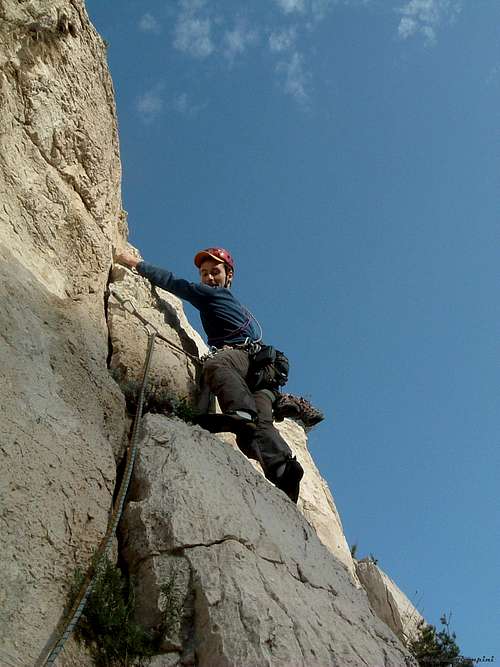
All year round except the summer period, too hot and with various access restrictions. Local climbers adapt themselves to the climate, climbing all around the year and choosing the sunny sides in wintertime and North faces during the hot season. Anyhow this is an excellent advice for planning a climbing trip: the best season goes from October to May.
Accomodation
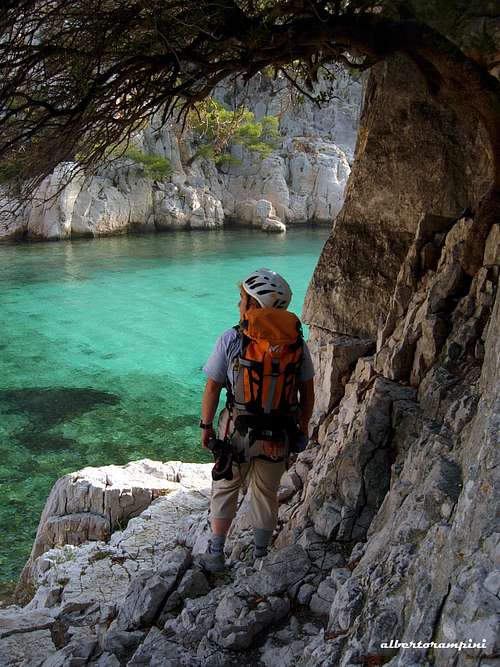
A great place to stay is the little town of Cassis (20 km East of Marseille) with wide possibility of accomodation, including a good campsite:
Camping Les Cigales
Avenue de la Marne
13260 CASSIS
Tel 04 42 01 07 34
In Cassis you can find shops and petrol easily. It would be a mistake to stay in Marseille as there can be traffic jams (second biggest city in France after Paris... 1 million people) and there is no camp site. However the good thing about is that it is only 3 hours away from Paris by train.
Meteo
Guidebooks and maps
“Escalade Les Calanques” by Andrè Bernard - Gilles Bernard - Pierre Clarac – Hervè Guigliarelli – Bernard Privat Ed. Nota Bene
"Alpes du Sud - Provence" by Hervé Galley - Editions Olizane
“Calanques Escalade” by Jean Luois Fenouil and Cèdric Tassan – Ed. VTopo
Map: "Les Calanques de Marseille a Cassis" 3615 IGN 1:15.000







